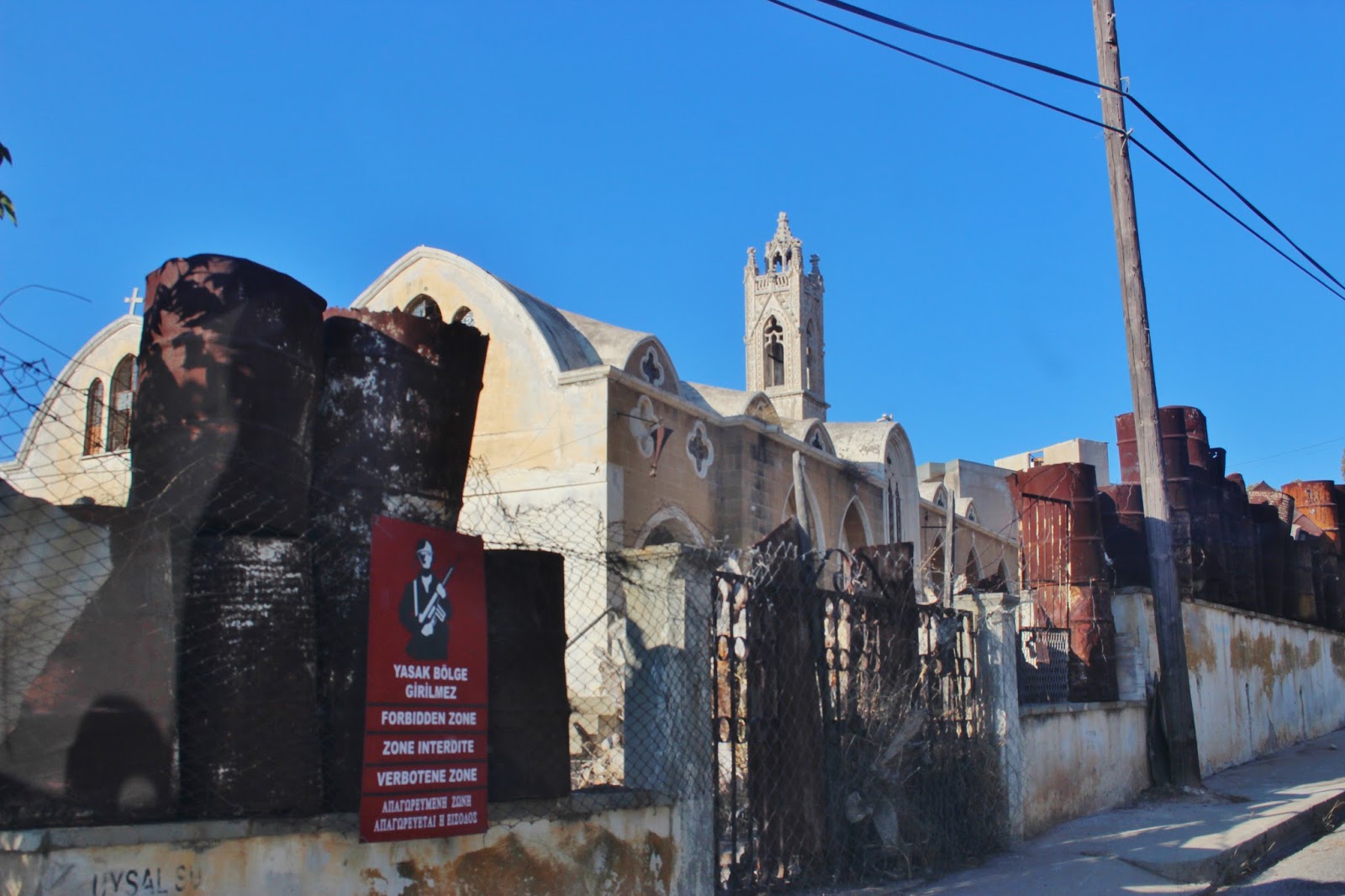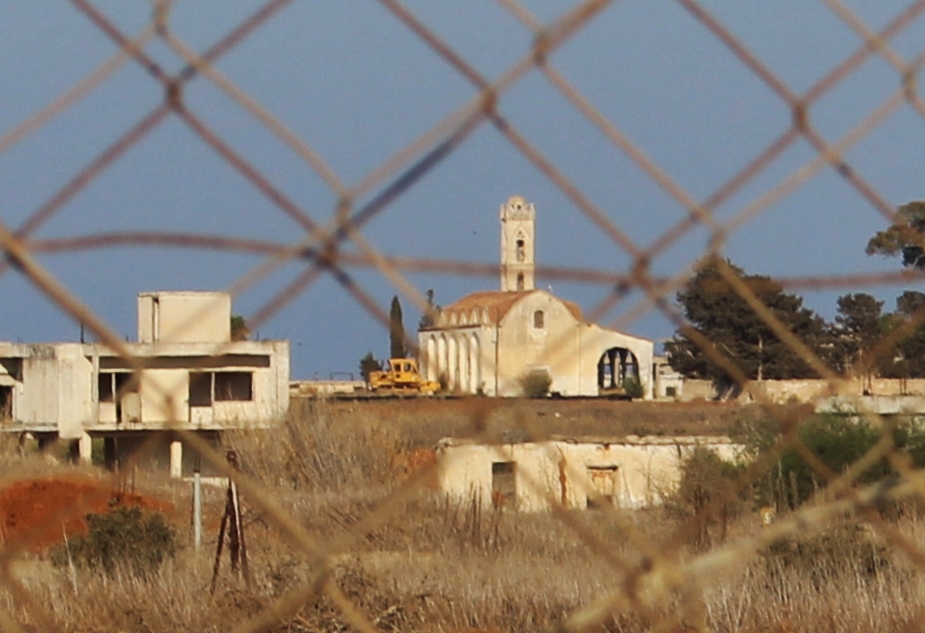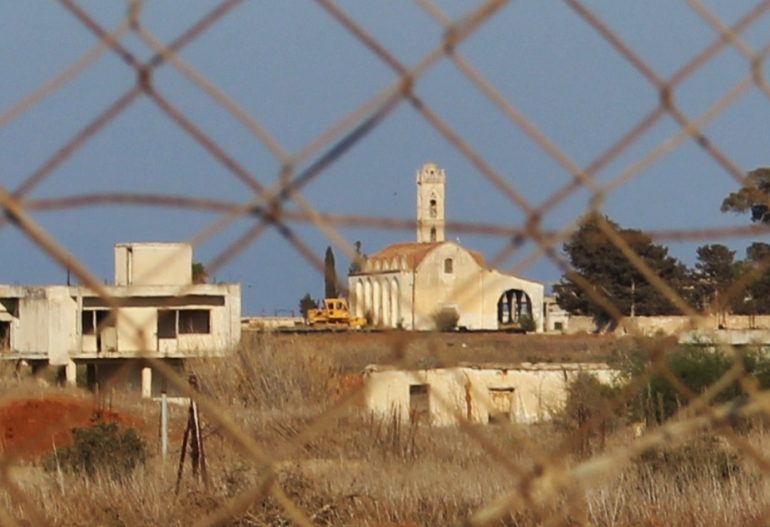Four decades later, Famagusta comes to the fore again. The "Council of Ministers" of the Turkish Cypriots approved the appointment of a group of experts, which will conduct a study in the enclosed city of Famagusta in Cyprus.
For 42 years the Turkish army has kept the area closed and no one is allowed to enter it.
The new city of Famagusta, called Varosia, began to develop in population immediately after the occupation of the medieval walled city by the Ottoman Turks in 1571 and the expulsion of its Greek inhabitants.
When the city was invaded by the Turks in August 1974 due to treason, its temples were looted from their icons and valuables. The opening of the roadblocks in 2003 gave us the opportunity to see precisely the tragic situation of the churches, which are located outside the city surrounded by the Turkish army. For those in the military and inaccessible unit, we know little about their conservation status and the problems they face.
The temples, which are located on the borders of Varosia are the following:
1. Agios Nikolaos Cathedral (inaccessible)
2. Church of Panagia Chrysospiliotissa Kato Varosia (accessible)
3. Holy Zone of Kato Varosia (inaccessible)
4. Church of Agios Ioannis (inaccessible)
5. Church of the Holy Cross (inaccessible)
6. Church of Agia Paraskevi (accessible)
7. Church of Agios Memnonos (inaccessible)
8. Chapel and cave of Agia Aikaterini (inaccessible)
9. Church of the Holy Trinity (inaccessible)
10. Sacré-Cœur Catholic / Maronite Church (inaccessible)
11. Church of St. Luke (accessible)
12. Chapel of Agios Panteleimon (accessible)
13. Chapel of Agios Georgios (Ai Yorkui), Salamina (accessible)
14. Church of Agios Georgios of Farangos (accessible)
It is characteristic that some churches bear the names of churches of the medieval city (Agios Nikolaos, Timios Stavros, Agia Zoni), obviously an indication of the transfer of honor and cult objects to the new temples.
The church of Agios Nikolaos was the cathedral of the city, but surprisingly very little can be confirmed about the history of the monument, while at the same time few photos were saved. The church was probably two-aisled, while the high bell tower that was located on the east side between the two aisles indicates a later intervention and expansion of the church probably to the north. The southern aisle had a multifaceted external arch. National memorials and official eulogies were held here.
The largest church in the city was Panagia Chrysospiliotissa in Kato Varosi, which in 1975 was converted by the settlers who inhabited the area into a mosque. The oldest written testimony that exists about Chrysospiliotissa dates back to 1335 when the traveler Jacobus de Verona mentions that he worshiped Santa Maria de la Cava (= Our Lady of Spiliotissa). Before the construction of the large modern church around 1960, what existed was only a tall bell tower (older than today) and the cave temple, which was originally an ancient tomb. Inside the cave there is still a well with holy water.
The church of Agia Zoni was one of the most important temples of Varosia. It was originally a one-room church, which was transformed in the middle of the 20th century into a two-aisled one by the architect Michalis Kokkinou, with several neo-Gothic architectural elements. In the center of the church there was a window, where the old icon of the Virgin Mary was located. In the church were kept important icons, such as that of the Entrances of the Virgin of the 15th century and of St. Barbara of the 16th century, which are today in the Byzantine Museum of the Archbishop Makarios III Foundation in Nicosia and the Virgin Mary the Hodegetria of the 16th century, stolen from Aydin Dikmen was abducted by Munich police and deported in 2013.

The church of Agios Ioannis the Forerunner was built in 1960 on the site of the small monastery of Agios Ioannis of Kourratha. The one-room katholikon survived south of the new church until the late 60s. The modern church was the work of the Greek architect Nomikos. The temple functioned as a "museum of images" from 1994 to 2003, but was eventually barred from entering by the Turkish army for security reasons. Some of the photographs taken by visitors show that the icons that were there were the ones that were painted for the church, among them the ephemeral icon of Agios Ioannis the Forerunner, a work of the 18th century. According to a Turkish source, in 1994, 120 icons were exhibited in the temple.
The church of the Holy Cross in the homonymous large parish of the city, is a building probably of the middle of the 19th century. The temple had built-in architectural members of older buildings of ancient and Byzantine, which may have been transferred there from ancient Salamis or old Famagusta or from an older building. A recent photo shows that the main south entrance of the temple is sealed. The same photo shows the neo-Gothic triangular lintel of the southern entrance, as well as vandalism and the inscription of Turkish names on the walls. The bell tower, a later addition of the 20th century, is built in the southwest corner of the temple.
The church of Agia Paraskevi is probably built in the 16th century. The only surviving part of the original building is the arch. Today the church is in a dilapidated condition, since the superstructure has completely collapsed.
The church of Agios Memnonos is a single-aisled cruciform church with a portico on the south side, of the 19th century. It is the only church in Cyprus dedicated to the saint of Asia Minor. The icon of the saint, which was kept in the church, dates back to 1829.

What we see today in Agios Loukas is the unfinished church. The old one-room vaulted church and part of the monastic buildings that existed in this place were demolished before 1974 to build the newer one. The old church was the katholikon of a small monastery, where until the first quarter of the 20th century there was an ecclesiastical court, while at the same time it was the official residence of the archbishops or their representatives, when they visited Varosia, which is known to belong to the Archbishop.
The chapel of Agios Panteleimon is located about 200 m northwest of Agios Loukas inside an ancient necropolis. The temple is small in size with many newer and unsightly interventions. The oldest parts are located on the east side and probably date back to the medieval era, ie the arch and underground vaulted carved tomb on the southeast side, where there was a holy water. The temple has collapsed for the most part. A few tens of meters north of the chapel there is a small ruined Greek cemetery today.
The newest domed church of Agia Aikaterini and especially the cave, was a popular pilgrimage of the people of Varos and especially of the students of the adjacent Girls' High School of Famagusta. Saint Catherine belonged to the Cathedral of Agios Nikolaos.
The modern church of the Holy Trinity was, when it was built, a scandal for the people of Varos, who did not see with a positive eye the revolutionary modern concrete building of the architects Filippos Brothers. The old stone church was demolished in the mid-1960s and the Aspelia Hotel, which belonged to the Archdiocese, was built in its place.
The one-room temple of the Sacred Heart (Sacré-Cœur) was used by the Roman Catholics and Maronites of the city.
The chapel of Agios Georgios (Ai Yorkui), opposite the area of Karaolos, is a cave church in which later operations were performed. The original building is older, as evidenced by the few fragments of frescoes that survive in the recess of the rock to the southwest of the temple. After 1974 the chapel functioned as a workshop of Fine Arts of the adjacent university, while today it was given to the Pentecostals to hold their meetings.
The church of Agios Georgios of Farangos is a building of the 12th century and is of the type of the collapsed cruciform. During the Venetian occupation there was a settlement, which belonged to the district of Mesaoria, but in the following years it was united with Varosia, which is why it is included in this list.
Of Byzantine Scholars, Dr. Chr. Hadjichristodoulou and Dr. A. Foulia
Source: churchofcyprus.org.cy
